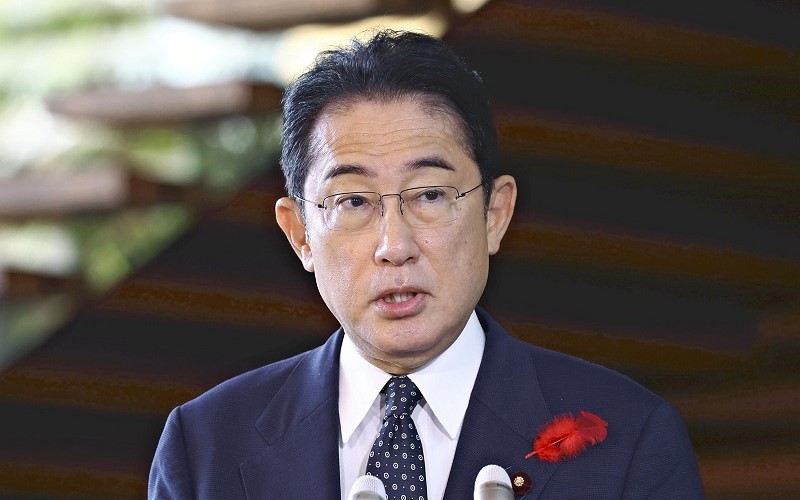Japan to accelerate discussions on enhancing defense capabilities amid growing N. Korea threat

Prime Minister Fumio Kishida speaks to reporters at the Prime Minister’s Office on Tuesday.
16:35 JST, October 5, 2022
The government intends to accelerate consideration of ways to drastically strengthen the country’s defense capabilities in light of the growing threat posed by North Korea.
On Tuesday, North Korea launched a ballistic missile that flew over Japan, and Prime Minister Fumio Kishida held a four-minister meeting of the National Security Council that day to discuss a response.
Chief Cabinet Secretary Hirokazu Matsuno stated at a press conference following the NSC meeting that “We have confirmed that we will take decisive action against North Korea, including further action at the U.N. Security Council.”
It is believed that the NSC discussed the collection and analysis of missile information as well as sanctions against North Korea.
The Defense Ministry has been using an automatic warning and control system called Japan Aerospace Defense Ground Environment (JADGE) to collect data on missile launches gathered from ground-based radars deployed nationwide and by Aegis-equipped Maritime Self-Defense Force warships. The system determines a missile’s point of impact based on its trajectory and other factors.
According to government officials, JADGE successfully detected the North Korean missile immediately after it was launched on Tuesday morning.
Based on the missile’s altitude and other factors, officials determined that there was no possibility the missile would land on the Japanese archipelago, and the government decided not to take measures that could have destroyed the missile.
“The Self-Defense Forces were fully detecting and tracking the missile from immediately after launch until it fell [into the ocean],” Matsuno said at the press conference.
However, recent North Korea missiles have been conspicuous for their low-altitude and irregular trajectories aimed at evading radar and missile defense networks. Since the beginning of the year, North Korea has repeatedly launched hypersonic missiles that fly at Mach 5, more than five times the speed of sound, at low altitudes.
If there is a risk of a missile landing on the Japanese archipelago, an interceptor missile can be launched from an Aegis-equipped MSDF warship to shoot it down outside the atmosphere. If the interceptor missile does not hit the target, ground-to-air guided missiles from the Patriot Advanced Capability-3 (PAC-3) system are fired in a “two-stage” structure.
Unlike conventional ballistic missiles that follow a parabolic trajectory, the irregular trajectory of new kinds of ballistic missiles is more difficult to deal with. The threat increases dramatically if a nuclear weapon is equipped on a missile that is hard to intercept.
In light of this situation, the government is expected to propose the possession of “counterattack capabilities” to attack enemy missile launch sites in conjunction with the revision of three defense documents, including the National Security Strategy, scheduled to be completed by the end of the year.
“The only way to enhance deterrence is to hasten the strengthening of Japan’s defense capability and make the Japan-U.S.-South Korea partnership a solid foundation,” a senior government official noted.
Defense Minister Yasukazu Hamada told reporters at the ministry on Tuesday, “We will consider all possible measures and will work to fundamentally strengthen our defense capability.”
U.N. Security Council to meet
In response to North Korea’s launch of a ballistic missile, the U.N. Security Council decided on Tuesday to hold an open emergency meeting on Wednesday afternoon. The United States is preparing a statement for the press that will “condemn” the missile launch. China and Russia’s response will be closely watched.




